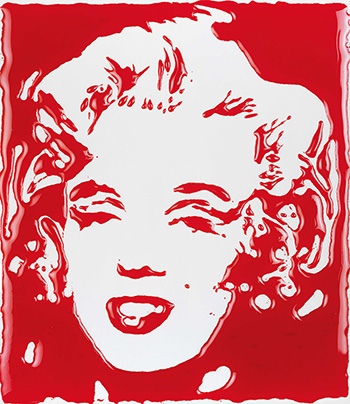Vik Muniz is known for modernizing historical art masterpieces made from daily objects, reconstructing pieces by pieces, folding gold within the abandoned material. Using art to change the world, and cure for the less- advantaged group, his subtle eyes are unique in spotting what appears to be “insignificant” to others, such as the reserve of some of the most recognizable artworks around the world.
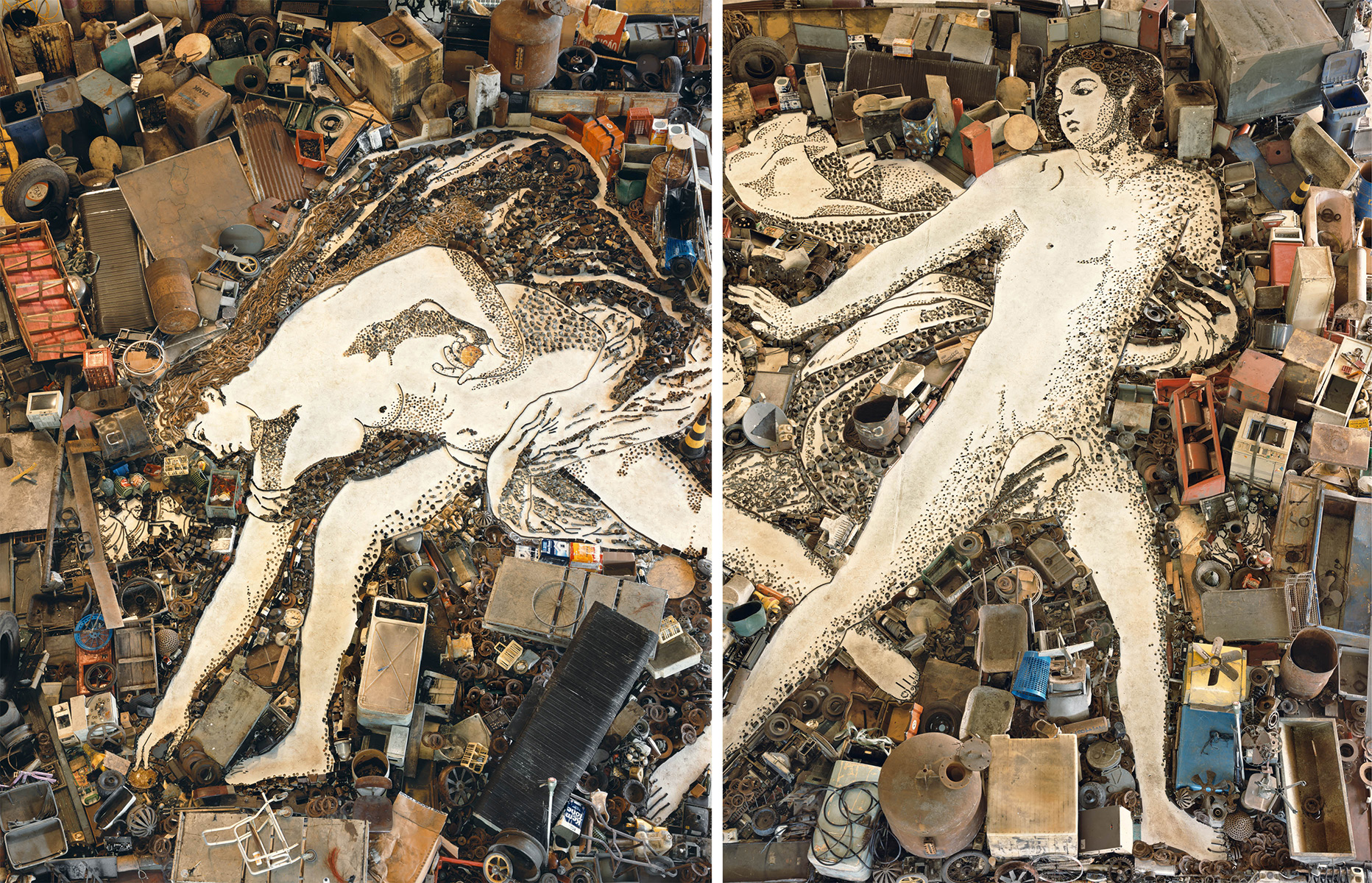
Vik Muniz, “Atalanta and Hippomenes, after Guido Reni” (diptych)
(Pictures of Junk), 2005, Chromogenic prints Edition of 6 + 4 AP (#2/6), 2 panels, 236 x 180 cm each
Image Courtesy of Ben Brown Fine Arts
Vik Muniz was born in Sao Paulo in Brazil in 1961, and currently resides in New York since the 1980s and work between Brazil and New York. This internationally prominent artist is famous for his use of unconventional materials, such as diamonds, garbage, chocolate, wires, spaghetti, sugar canes, etc, incorporated in his works, then transformed into enlarged photographs further enhanced the awe of visual impact.
Muniz’s works are included in major public institution like the Guggenheim Founation, New York; MoMA, New York, the Foundation Cartier pour l’Art Contemporain, Paris; Tate, London; International Center for Photography, New York. Muniz also represented the Brazilian Pavilion at the Venice Biennale back in 2001.
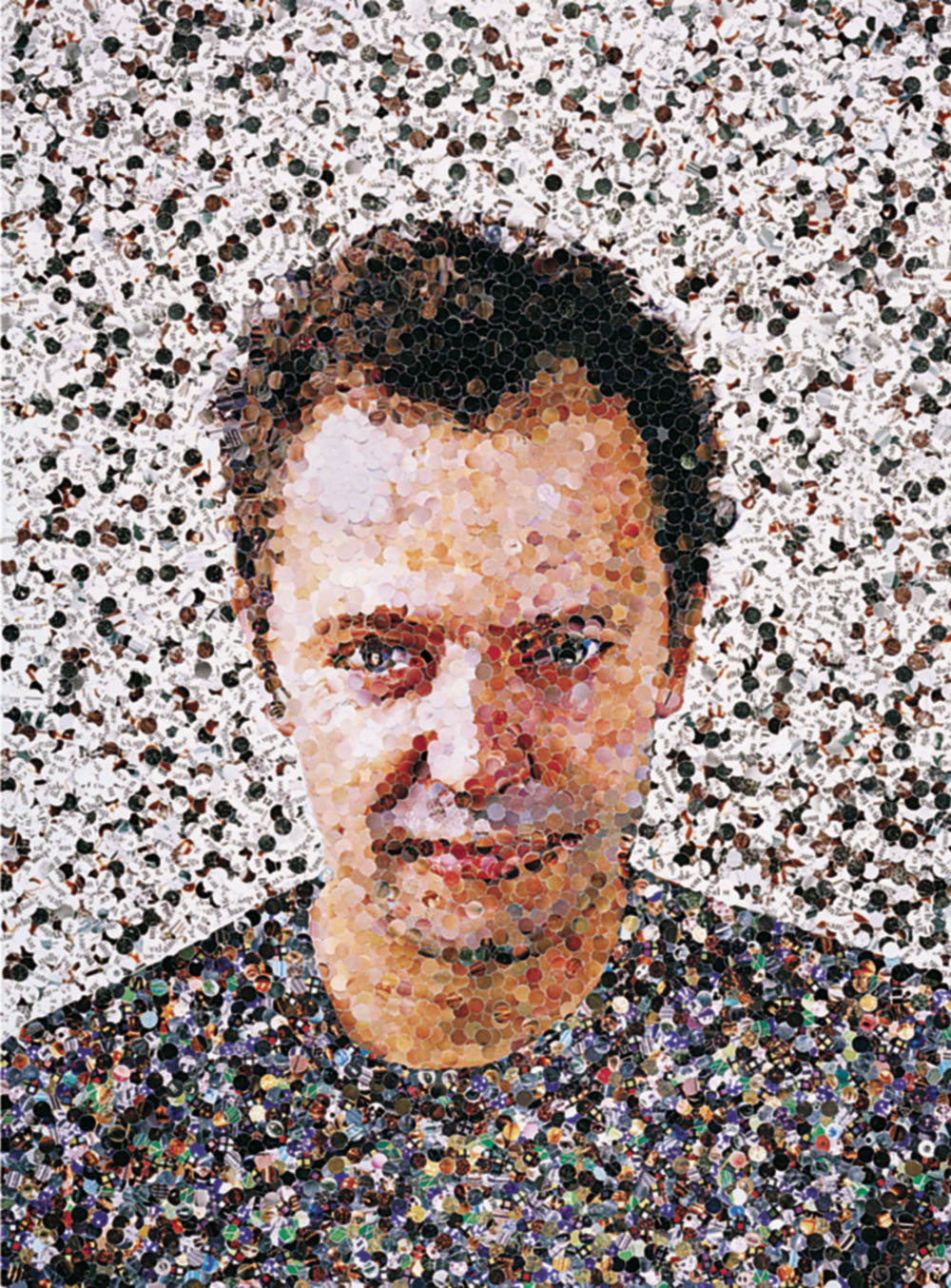
Vik Muniz, “Self Portrait” (from Pictures of Magazines), chromogenic print
Image Courtesy of Top Photo Group
Muniz originally worked as a sculptor; later on in the career he gradually developed deeper interests in the field of photography. As a child growing up in the autocratic ruled country, Muniz learned to express things in indirect way, and has always been interested in the media.
From dictatorship to media explosion of the 80s in the States, he has found the platform for his artistic creations. Muniz has created several series based on recognizable images throughout art history and remix it with pop culture, creating another layer of visual experiences.
In “The Pictures of Magazines” series, Impressionist masterpieces like Claude Monet’s “Nymphéas” was reconstructed with torned magazine scraps; in “The Picture of Diamonds” series, portraits of famous stars like Audrey Hepburn and Elizabeth Taylor have been made into mosaic of diamonds; In the “Pictures of Chocolate” series, Muniz recreated a photograph taken by Hans Namuth of Jackson Pollock when he was making one of his paintings. Besides the sweet and dazzling visualization of Muniz’s creations, his visions and contributions to the society are far greater than that.
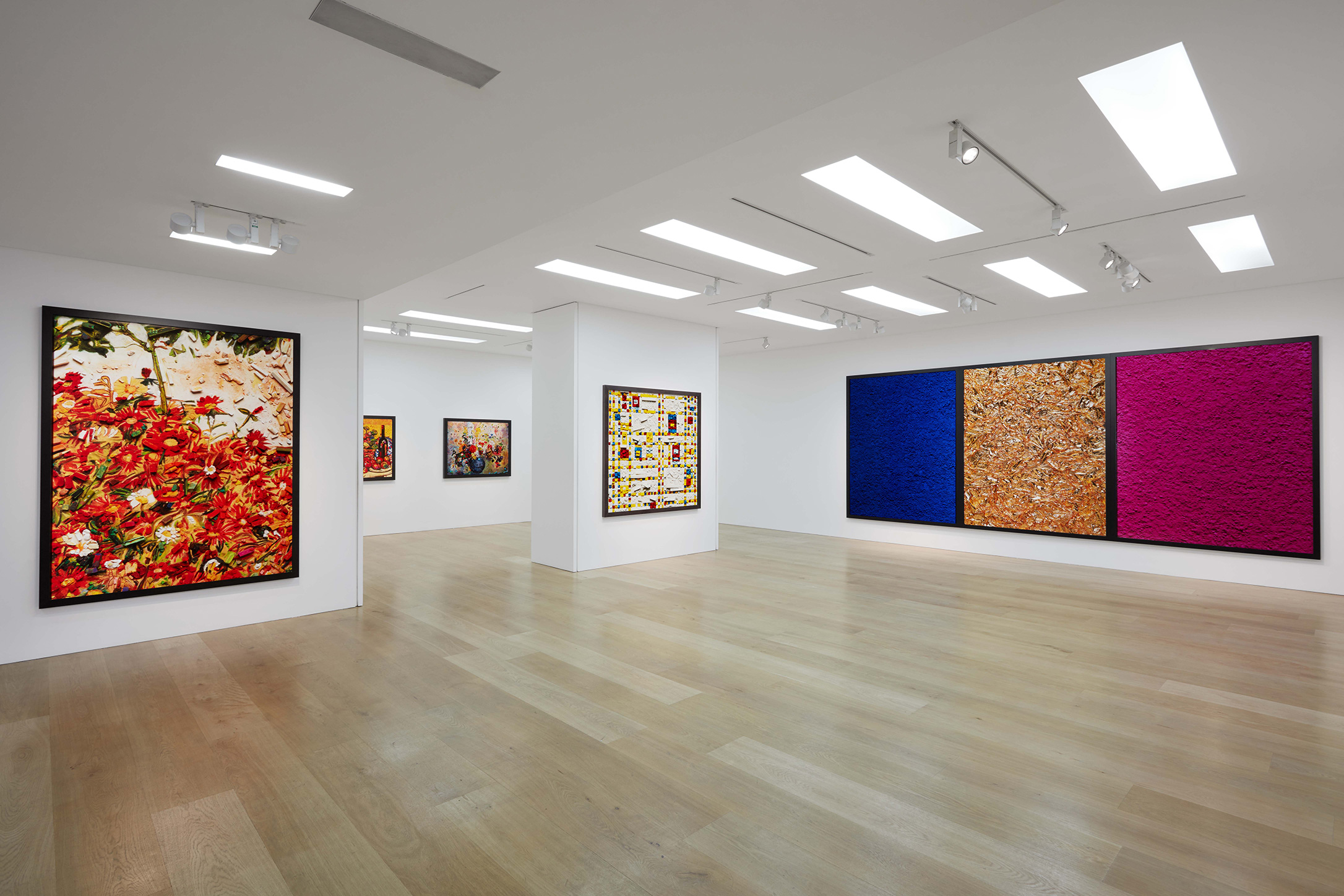
Vik Muniz Solo Show “Metachromes” at Ben Brown Fine Arts London, 2016
Image Courtesy of Ben Brown Fine Arts
Among the many projects Muniz was involved with the NGOs, Muniz believed that art can be used to change the lives of the disadvantaged. In 2010, Muniz returned to his home country, Brazil, and worked in collaboration with the catadores (wastepickers) at the world’s largest waste landfill just north of Rio de Janeiro.
Muniz made a series of photographic portraits of these caradores made from garbage, with references to art history, and exhibited “The Pictures of Garbage” series to the public, seeing them through the lens of Muniz, some of the catadores began to see their lives from another angle, and the society could also re-examine the issues underneath this wasteland and those dependent of it. The documentary film of “Waste Land” was released in 2010 and received in numerous awards. The money received from the sale of those portraits was given back to the catadores to initiate changes of their lives.
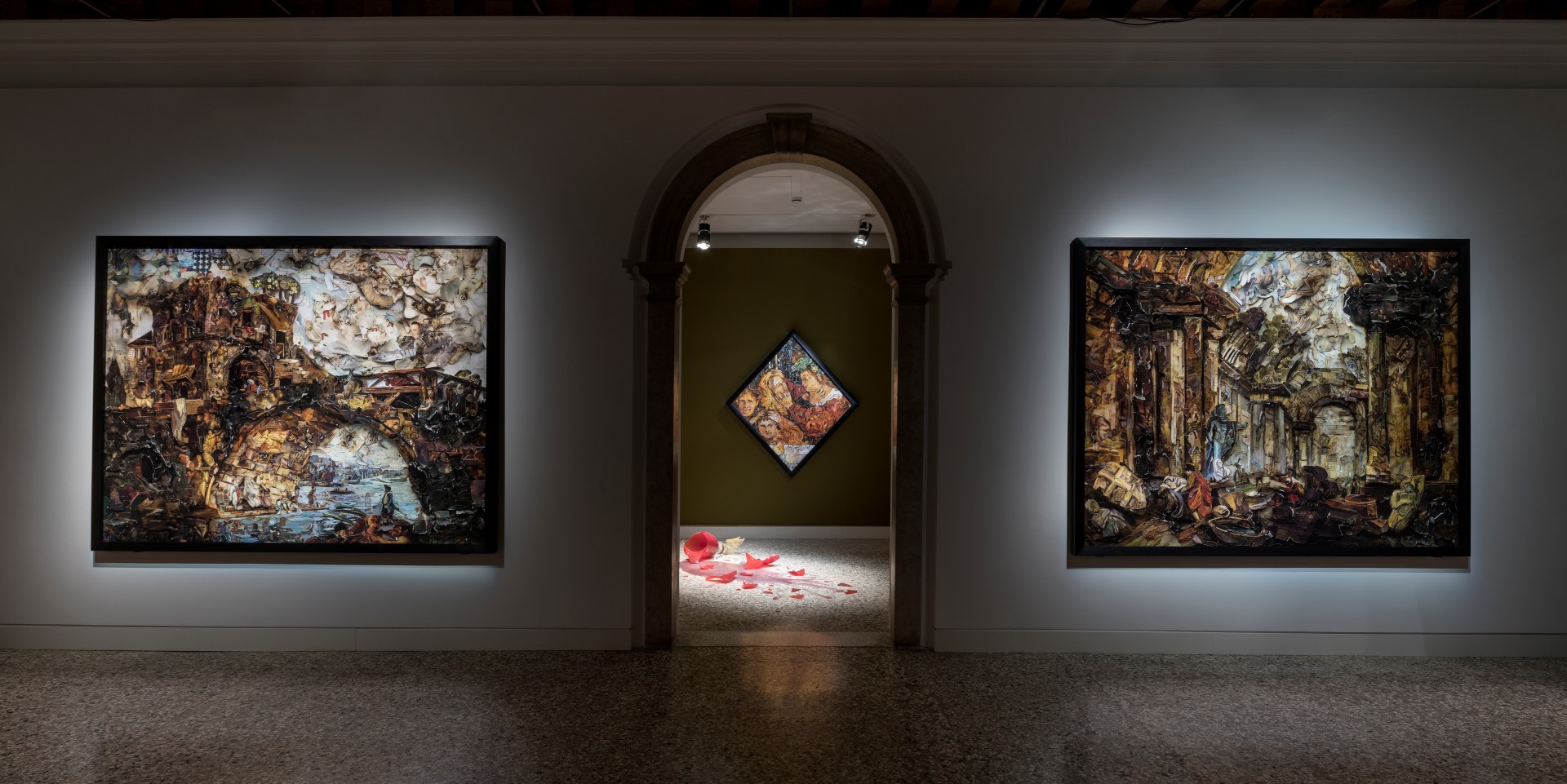
Vik Muniz Solo Show at Palazzo Cini in Venice, 2017
Image Courtesy of Ben Brown Fine Arts
The “Verso” series was a another example of how Muniz looks at things differently. Since 2002, Muniz began photographing the backs of some of the famous paintings, then re-made the backside of them. In 2016, he had a special collaboration with the Mauritshuis in Netherlands. The exhibition “Verso” added five additional versos based on the Dutch Golden Age collection of the Mauritshuis to the series. The versos were placed side by side to the original works of the museum, which were Vermeer’s “Girl with a Pearl Earring” and “View of Delft,” Carel Fabritius’ “The Goldfinch,” Rembrandt’s “The Anatomy Lesson of Dr. Nicolaes Tulp” and Frans Post’s “View of Itamaracà Island in Brazil.”
For a long time, art historians have been digging for clues based on the surface of the paintings, only very few would have access to the back of the paintings, and thus they were often easily overlooked. Yet, Muniz’s attempt and approach has once again exposed the less noticeable side of the picture to us. Muniz is still very active on a global scale, contributing to the changes of this world through art.
